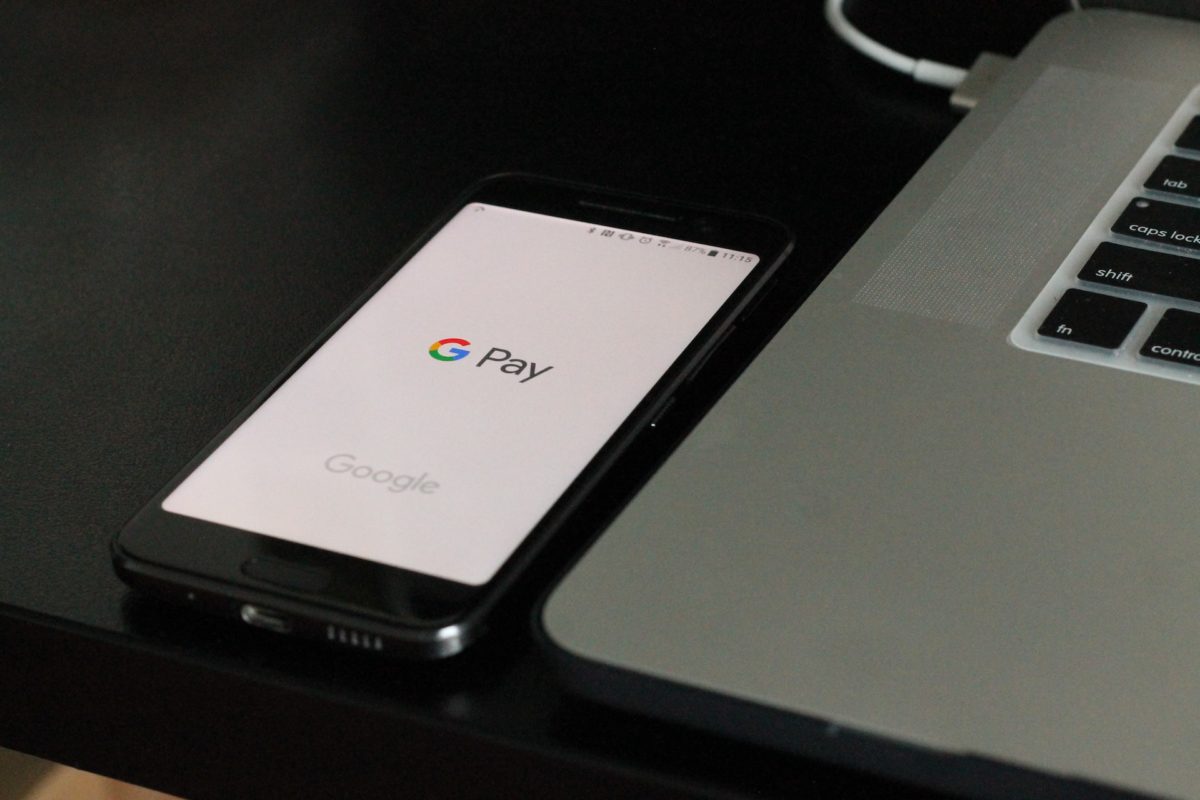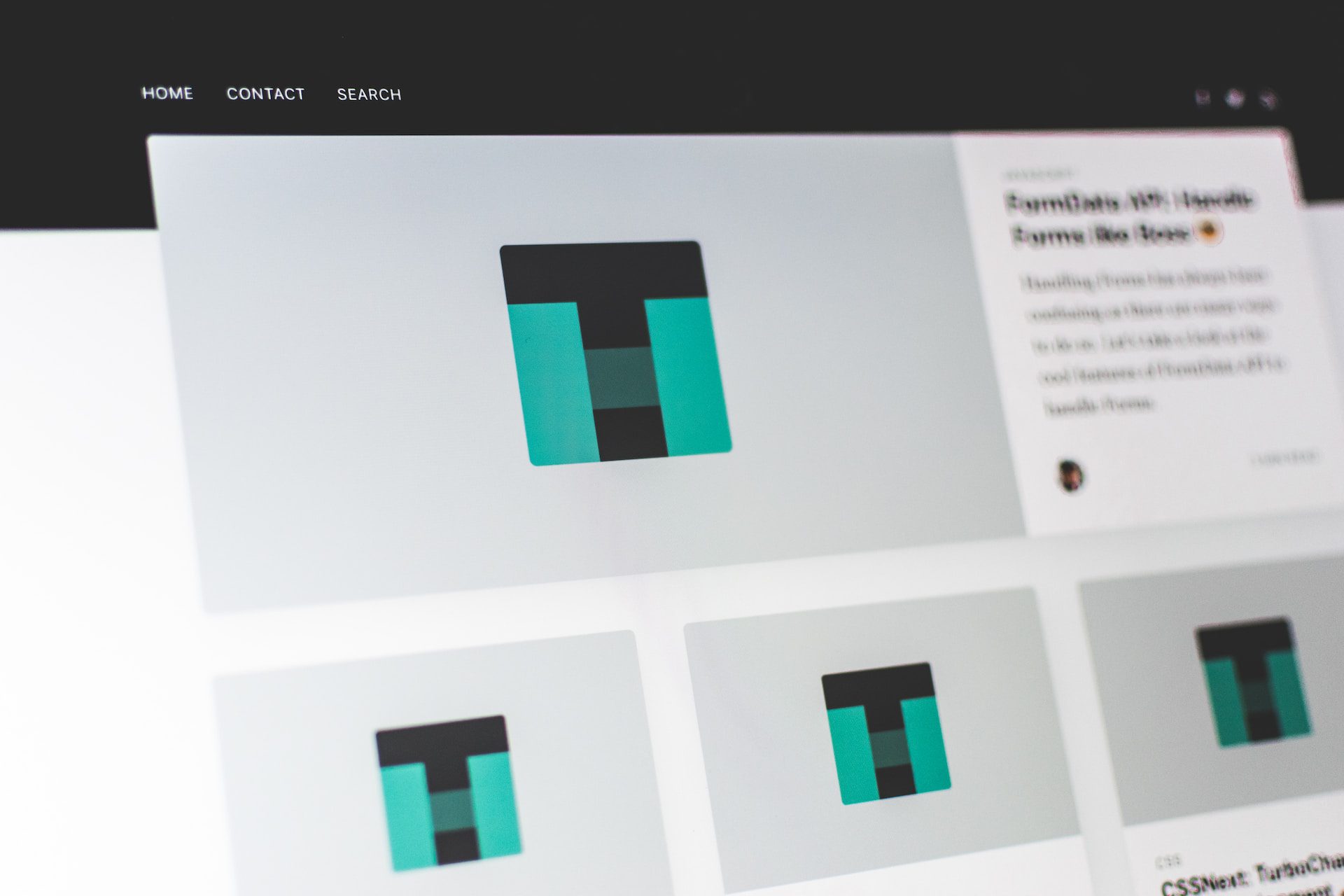This guide breaks down how to create a landing page that converts, guiding you through the process of selecting the right tools, crafting compelling content, designing with impact, and testing to ensure peak conversion rates.
A good website is a must-have for any business these days, whether we are talking about personal brands, huge corporations, or small businesses run by families. How to create an engaging website that will make users willing to visit it and support your activities in various fields? How to make your website visually appealing and functional at the same time? Here is a list of twenty proven tips you can use to achieve those goals!
Is having a website important for business?
A website can have many different roles, but they all relate to how it represents your business. It has to be refined so that potential customers can actually become interested in what you have to offer. Why should you have an engaging website? Here are six important reasons:
Supports sales
If you want to sell online, you must have a website. Of course, you can use different platforms, such as the Facebook marketplace or eBay, but it is definitely more professional to have your own sales system. It is also more profitable. So regardless of whether you are selling physical or digital products or services, it is worth investing in an online store.

Allows you to build the image of an expert
The ability to place a blog on the website gives you an opportunity to easily provide users with substantive and interesting content. This, in turn, leads to building the image of an expert, which is extremely important, especially in technological start-ups or the service industry. In fact, in most companies, building an image of an expert matters because potential customers are much more likely to buy something from people they trust or consider an authority in an industry.
Keeps your customers up to date
The website is the best place to post news about the company, its goods, or services and attract interest. You can, for example, use it to provide customers with updates regarding the new version of an iconic product from your offer. It is also a great space to show off various awards that indicate that the company is constantly developing.
Allows you to build a customer contact database
The website also allows you to encourage users to subscribe to your newsletter. Collecting a database of potential customers’ email addresses is very important from the digital marketing perspective, so it is worth using your website in this way as well.
Promotes your brand
Thanks to the website, you can promote the brand using paid advertisements, e.g. in Google Ads, which will direct users to your offer. Remember, however, never to introduce this type of advertisement if the website is not well prepared, because it can significantly affect the user experience.
Ensures credibility
A very important element of having a website is also the fact that it makes potential buyers see your business as credible. Do not forget to take care of all the most important issues that will make users feel safe, i.e. privacy policy and website regulations. It is also worth including full contact details and, in the case of online stores, any information regarding returns, complaints, or delivery.
How to create an engaging website?
Now that you know why it is important to have an engaging website, it is time to take it a step further and create one. Check out our twenty tips that will definitely make this process easy and enjoyable.
Specify your target audience
Before you even start working on building a website, think about who you are creating it for, i.e. who is in your target audience. Is it supposed to be a useful sales website, thanks to which busy people can quickly make the most necessary purchases? Or is it supposed to be an educational platform for people who want to learn foreign languages? Knowing who your ideal customer is will make it much easier for you to build the website.
Building a persona requires gathering a lot of information. You can gather them through market analysis and specialized research, but it is also worth using interviews with potential clients and your own experiences. The most frequently collected data on the target group encompasses:
- basic information (name, age, gender),
- personal data (place of work, marital status, place of residence, e.g. whether it is a city or village, number of children),
- personality (whether they are an extrovert or an introvert),
- character traits (e.g. sensitive, hardworking, etc.),
- values (e.g. home and family or career and money),
- concerns (e.g. lack of money or time to care for their children),
- goals (e.g. saving money for their dream car),
- challenges (e.g. job change),
- motives (internal or external),
- preferred communication channels (e.g. social media sites, TV),
- products or services they would select from your sector,
- source of information about the world,
- their frustrations,
- needs that your company can address,
- interests and passions,
- free time activities.

Know your audience’s needs
Since we are already talking about the clients, it is time to move on to their needs. Many people who design engaging sites forget that they are not creating them for themselves, but for the people who will use them. Imagine, for example, that you are creating a website for a start-up that produces smartphones. You want to prepare it in such a way that it is as interesting and interactive as possible, thanks to which you will surprise the website visitors. However, it turns out that in the maze of various elements, what is most important is lost, i.e. the exact parameters of the flagship models. You might not notice it because you know your product perfectly, but your customers will be frustrated.
We are often biased during the process of creating a website, so it is worth asking impartial people what they would expect from it, what ideas they have, and what would cause frustration. Thanks to this, you will gain a set of extremely valuable information, which translates directly into how engaging a website you will prepare.
Decide what is the main purpose of the website
If you want to create an engaging website, you need to know why you are doing it. Set the main goal or goals that the website is supposed to help you achieve.
These objectives can be divided into strategic, tactical, and operational.
When it comes to the tactical goals of the website, the following can be distinguished:
- increasing brand awareness;
- building the image of an expert;
- deepening knowledge of the target group;
- acquiring sales leads;
- increasing web traffic;
- improving the quality of customer service;
- engaging visitors in some specific activities;
- expanding the contact database.
Strategic goals, in turn, can include actions to generate an increase in the number of products sold or boost conversions, whereas operational goals should aim at increasing user engagement, implementing website positioning activities, or increasing the average time spent on a website.
Do not overlook any of these aspects, but be sure to prioritize your goals once you have chosen what you are aiming for and determine which of them can be accomplished fast and which are long-term. This is also important from the perspective of what kind of website you want to prepare. For example, for the sale and promotion of one product, e.g. an ebook, a landing page will be perfect, to present a company we should use a one page or a single page website, and for a substantive service, you will need a website with a blog.
Visit our blog where we compare landing page vs website to learn more.

Make a website plan
Another important aspect is to build a structure that makes sense and is as intuitive as possible for users. You need to carefully analyze: how many specific pages will be on the page and what additional tabs they will lead to, as well as what links will be assigned to them. And this is just the beginning! It is also important what the layout of the content will be and what other elements will you use – e.g. popups, widgets, footers, headers, etc.
It is best to start planning the structure of the page by creating each level separately. Start with what your homepage will look like. Then move on to writing down information about each of the subpages and possibly additional tabs. After that organize everything into meaningful categories and write out the levels. This will give you a full overview of site navigation and make your website more intuitive to use.
Match the visual elements of the page to the visual identity of the brand
The visual identity of the brand should be reflected on its website. You should also use the same color palette, fonts, or logos used on business cards, outlines, and social media on it. Only then will you maintain full consistency of visual elements, and potential customers will be sure that they have come to the right place when they are redirected to your site, e.g. from social media advertising.
However, keep in mind that the current popular web design trends include minimalism, having fun with form, and the so-called statement piece, i.e. one eye-catching point on the website. Going crazy with too much color is not well perceived. Nowadays, a beautiful website is one that is clear and cleverly constructed. So, make your website aesthetically pleasing and closely related to your brand’s visual identity, but try to make the design as balanced as possible.
Would you like to know what we mean when talking about a website with bad design? Visit our blog to learn more!
Hire proven specialists
If you want to be sure that the website you launch will fully meet your requirements, then you need to put together a team that fully understands your idea and knows how to implement your website design. Such activities usually require involving many people. Your team should have:
- an excellent programmer who is capable of creating dynamic, responsive, and interactive websites, regardless of their web design or how extensive they are;
- an SEO specialist who will take care of website positioning from the very beginning;
- a content specialist, i.e. a person who will prepare both relevant content on the website and a general content plan, aimed at attracting many users to the blog;
- a graphic designer who will take care of creating the appropriate web design and edit photos, e.g. for product pages;
- a photographer who can take professional photos in a style that suits your business;
- website manager, i.e. the person who takes care of the website after its creation. It is worth having them already involved in the whole process from the very start. Thanks to this, they will know it best, and will also be able to suggest new solutions, e.g. other interactive elements that will work best on a given website and have not yet been implemented.
Our custom web design services are tailored to maximize user engagement, boost conversions, and create a memorable online presence for your brand.

Make your website UX-friendly, adapted to mobile devices
The use of UX principles in building a website is extremely important because only this will make both regular and new users want to spend time on it. What do you need to ensure that the experience of people who visit your website is at the highest level and that the entire site is user friendly? Here are some important issues to address:
- fast website operation, i.e. not only efficient loading of all web pages and the home page but also fast and correct loading of images and videos, also when visitors scroll it down or up;
- intuitive menu that will easily guide the user through all the elements of the website that interest them;
- site search feature, thanks to which the user will be able to easily find what they are interested in, and receive the most precise search results;
- aesthetic website design;
- quick access to profiles on social media platforms;
- all tabs related to the organization, e.g. contact, deliveries, regulations;
- easily accessible contact details;
- location of different elements that allow customers to contact you, i.e. telephone, email, contact form, chat;
- adapting the website to mobile devices.
It is also worth making sure that the proposed website design is interesting and intriguing, to ensure it will attract the user’s attention who, until now, did not know anything about your website or even your brand. Keep in mind that visitors strongly prefer interactive websites that are both desktop and mobile friendly.
Prepare text for content
Content marketing is currently one of the most effective branches of marketing. You should definitely use it when creating your website, otherwise, you will lose a lot of potential customers from the start. Prepare good, catchy texts on the homepage, precise descriptions of products and categories, as well as any other text that must be included on technical pages.
It is also important to plan blog content from the very beginning. This is especially important if you want to immediately focus on website positioning and elevate your brand to the industry expert status.
Also, do not forget that delving into the content on the blog of a brand that aspires to be a specialist in a given area should not only focus on the educational aspect of texts but also create an engaging experience. That is why, it is best to plan a publishing calendar for blog posts for the next two to three months at the stage of creating your website so that right after its launch you can start publishing valuable content that will be interesting and unique. We have prepared a guide to website content creation for you. You should definitely read it before you start.
Prepare high-quality photos and videos
Photos and video content are an essential element of web design. You probably know that they must be aesthetic and match the style of your business as a whole. However, many people forget about their technical side. Both photos and embedded videos must be prepared in a format that will not affect their quality, but also will not interfere with the functioning of the site. Remember that it is better to have fewer photos, infographics, or videos on your site than to have a page that takes a long time to load and does not display everything correctly. You can make your website more engaging by increasing its speed.
Take care of the legal aspects
It is also worth hiring a lawyer to participate in the creation of an engaging web design. They will take care of all technical aspects, such as regulations, privacy policy, and cookies. Many people forget this and focus only on good web design or marketing. However, it is also very important that someone who knows about online law take a good look at your site, as this can save you a lot of stress and frustration in the future.
Remember about SEO and creating relevant internal links
Search engine optimization is the basis of online marketing because it allows your website to appear in the search engines in the top positions. You will make a big mistake if you leave SEO activities for later because you will have to correct all the content that you have already added to the website and waste a lot of time. That is why it is worth specifying the keywords at the beginning and handing them over to the person responsible for the content.
You should also pay attention to all technical aspects of written content – e.g. meta tags or meta titles should be added to each of the pages. It is also necessary to plan relevant internal links on the page, because they are extremely important for the search engine algorithms, as it is a kind of navigation on the page for robots. This is also a good time to choose a tool that will allow you to monitor your current performance. It will enable you to immediately add its address to it and monitor the changes.

Do not forget the footer
The footer is an element that is often neglected when it comes to web design, and that is a big mistake! Just as the catchy header is the introduction that opens the site, the footer is the part that closes it. There should be relevant links, e.g. related to the regulations, as well as telephone numbers, office address, company services, and other necessary information. You should also add testimonials to the footer, e.g. in the form of a link redirecting to a separate subpage. You can also populate it with a newsletter subscription box, site map, widgets containing social media links, or other interactive elements.
Remember to implement a redirection to social media
If we are already talking about social media, we must mention that redirects to social media profiles should appear in several places. It is certainly worth placing them in the contact details tab and in the footer, but it is also worth creating a slide-out widget that will follow the user. However, make sure that it does not interfere with all the other data.
Add chat to the site
Chat or the option to request a call in a few minutes are very good options for customer acquisition that boost engagement. A person who decides to write or receive a call is much easier to convince when it comes to a purchase than one who just happens to visit the website. Using a chat is easy, and the easier the manner of contact, the better, because more people will decide to use it. That is why it is worth placing a clear contact widget on the white space of your website. This greatly attracts visitors’ attention and makes them click.
Create calls to action
CTA is an important element of basically every page and subpage because it allows you to make the website more engaging. A call to action can range from an invitation to sign up for a newsletter to an incentive to use your contact details and ask you about the offer or purchase a product. However, remember to plan on which subpage each CTA will be located, so as not to repeat one option too often and not make the user feel overwhelmed, e.g. by constantly trying to persuade them to buy something. To maximize the impact of your CTAs and drive higher conversions, we recommend exploring our article on web design tips to boost conversions.
Add elements that encourage users to subscribe to the newsletter
We have mentioned this issue several times. The newsletter allows you to create a customer base. Such contacts are invaluable. That is why it is worth preparing, for example, a popup that will be displayed after a few seconds on the page with the encouragement to sign up for the newsletter. It is a good idea to make the reward for signing up tempting. For example, you can offer a discount to the store or a free ebook. You can also place the option to subscribe to the newsletter in the footer of the page so that users can find it easily.
Add Google Analytics tracking code
By adding the Google Analytics tracking code, you will be able to see who and with what frequency visits your website and how often the website is searched for. You will also find out where the visitors come from. This is invaluable knowledge that will allow you to determine how your website is doing and whether you have to put in more effort to make the website more engaging or not.
Add the Search Console tracking code
Search Console contains information on how Google scans and indexes pages. It helps in monitoring and optimizing their effectiveness in search engines. By adding the tracking code you will receive a lot of valuable information regarding your website, so you should definitely do it.
Test your website
Creating an engaging site requires many hours spent on testing. It is worth putting the finished website, before releasing it, into the hands of a few testers who will go through it from top to bottom and prepare a comprehensive audit. Thanks to such reports, you can, for example, see where it is worth implementing actions to improve readability and thus boost visitors’ interest in a given part of the website.
You must be sure that entering the site guarantees a smooth user experience and make a website that fully meets the needs of visitors. Remember that user perspective is also extremely important. Therefore, immediately after releasing the page to the recipients, collect consumer feedback and analyze it thoroughly.

Constantly optimize the website and check user engagement
A lot of people forget that creating engaging websites is a never-ending process. Keep in mind that trends in the construction of websites change just like trends in fashion, makeup, or interior design. For example, white space with black elements can be extremely popular, and research will show that monochrome sites are attracting users, but after two years white space goes completely out of fashion. What is more, the needs of users and the requirements of algorithms change.
In addition, technology is constantly evolving, the online space keeps developing, and the equipment we use offers more new functions. You cannot count on the fact that once your website is created it will work well for years. So remember to always include website optimization funding in your annual budget.
Collect consumer feedback on a regular basis as well, as it matters a lot whether your site is an easy space to navigate or if it is a source of frustration. It will help you greatly in the process of creating a more engaging website that attracts visitors.
We hope that now you will be able to make your website in a way that will meet all the expectations of your target audience and ensure high engagement rates with ease. Remember that an engaging website is an online business card of your brand, so it is worth spending time on its preparation because it will definitely pay off. Feel free to contact us if you are looking for someone to help you with this task. We will also support you in preparing a website redesign project plan if you already have a website but want to change it.






